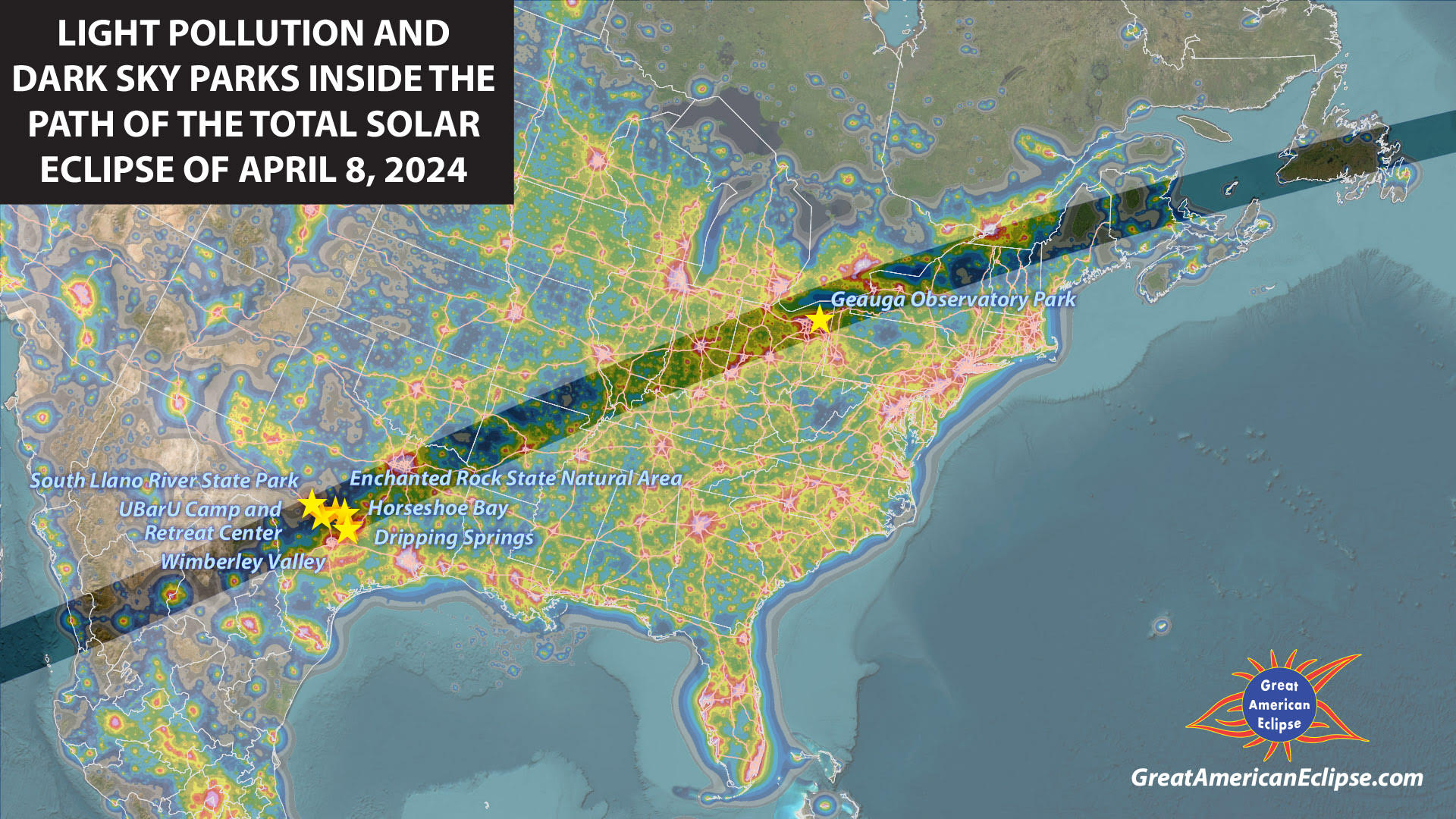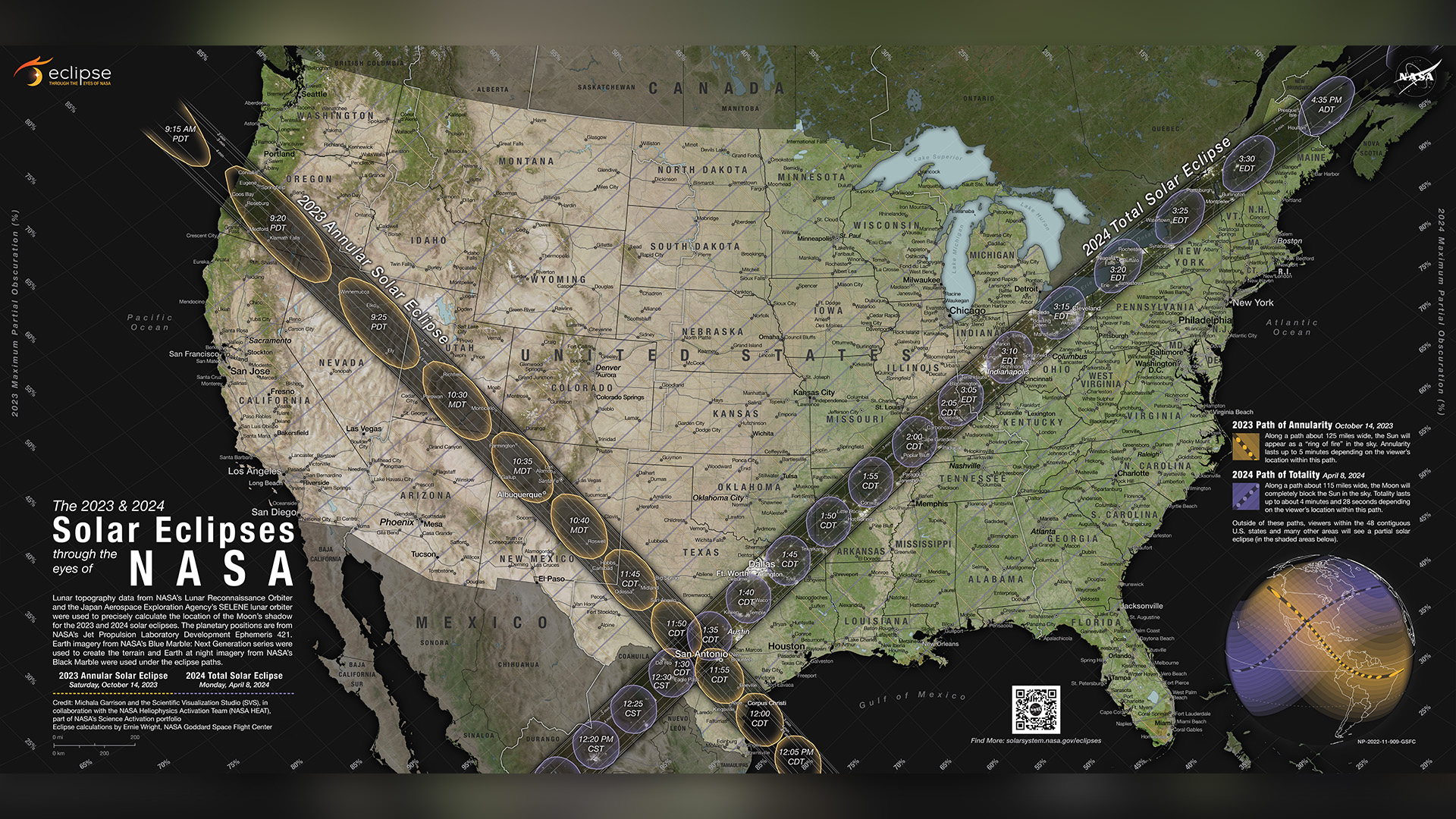April 8 total solar eclipse: The best places to stargaze near the path of totality
The April 8 total solar eclipse will be visible from many large cities, but anyone looking for skies free of light pollution should check out one of these dark-sky parks and reserves in the path of totality.

Eclipse chasing and stargazing are made for each other. A total solar eclipse — which will be visible in parts of North America on April 8 — can happen only during a new moon, when our natural satellite moves between Earth and the sun. Besides causing an eclipse, this arrangement also means that the moon is in the daytime sky, which means there's no moonlight at night. That makes the nighttime skies around an eclipse perfect for stargazing and astronomy. (Here are four astronomical observatories and telescopes in the path of the eclipse.)
However, clear night skies are not guaranteed on April 8; a lack of moonlight at night is one thing, but light pollution can easily squander precious darkness around a new moon and ruin potential stargazing.
Although light pollution doesn't affect the precious moments of totality — when the sun's corona will be visible for a few minutes while a sudden darkness falls in the daytime — it does impair stargazing and astronomy. In fact, a paper published in January 2023 in the journal Science revealed that the sky's brightness at night is increasing by 10.4% every year.
April's total solar eclipse will be visible only within the 115-mile-wide (185 kilometers) path of totality, which will stretch from northwestern Mexico to southeastern Canada via parts of five Mexican states, 15 U.S. states and six Canadian provinces. That path covers many big cities, including Mazatlán, Mexico; Austin, Texas; Dallas; Indianapolis; Cleveland; and Montreal.
However, it also crosses a few rural parts of North America where light pollution is at low levels. If you want to see the total eclipse as well as dark night skies, the best option is to head for one of these areas.
Related: Total solar eclipse April 2024: The 10 biggest cities within the path of totality
The most obvious places to aim for are International Dark Sky parks and reserves — protected areas that strictly limit light pollution to encourage skywatching and protect the local ecosystem — that fall inside the path of totality.
Sign up for the Live Science daily newsletter now
Get the world’s most fascinating discoveries delivered straight to your inbox.

On April 8, International Dark Sky Places within the path of totality include South Llano River State Park, Enchanted Rock State Natural Area, Milton Reimers Ranch Park, UBarU Camp and Retreat Center and Lyndon B. Johnson National Historical Park (all in Texas Hill Country) and Geauga Observatory Park in Ohio.
Other parks close to the path include Middle Fork River Forest Preserve in Illinois, Dr. T.K. Lawless County Park in Michigan, Cherry Springs State Park in Pennsylvania and AMC Maine Woods in Maine. Most of these destinations' campgrounds will be booked for the nights around the eclipse, but you may be able to find a site a few days before or (more likely) after the eclipse, if you plan on traveling anyway.
An easy way of instantly seeing good stargazing locations within and close to the path of totality is to look at this interactive Google Map of the path, created by eclipse cartographer Xavier Jubier. In the top-right corner, you can toggle the display to show "Night Sky Brightness." Do that, and you'll see that some regions stand out for having dark skies at night, including the Texas Hill Country, the Ouachita Mountains of Arkansas, southeastern Missouri, the Adirondacks in northeastern New York, northern Maine, and New Brunswick and Newfoundland in Canada.
The chances of a clear sky at night in April are the highest in Texas.

Jamie Carter is a freelance journalist and regular Live Science contributor based in Cardiff, U.K. He is the author of A Stargazing Program For Beginners and lectures on astronomy and the natural world. Jamie regularly writes for Space.com, TechRadar.com, Forbes Science, BBC Wildlife magazine and Scientific American, and many others. He edits WhenIsTheNextEclipse.com.










